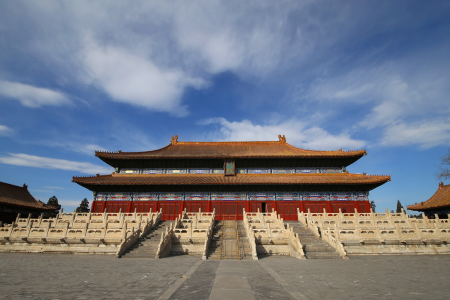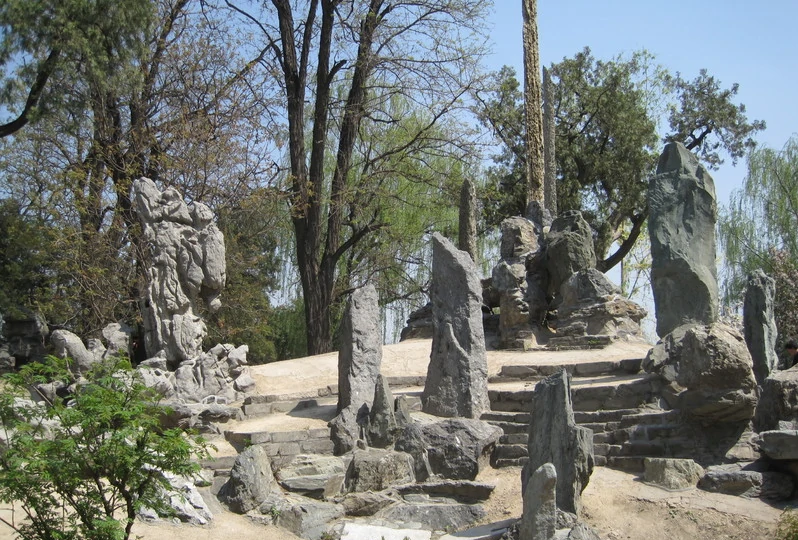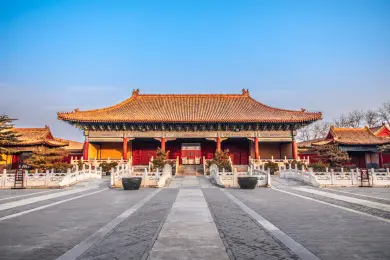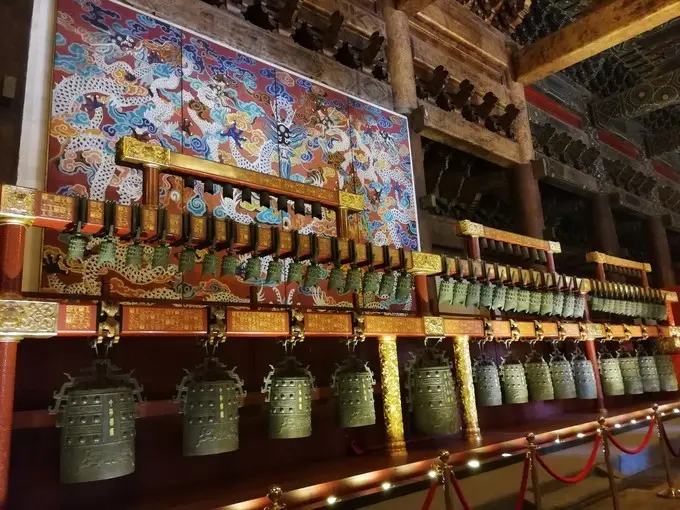Chinese Name: 北京市劳动人民文化宫 Pronunciation: Běijīngshì Láodòng Rénmín Wénhuàgōng
Recommended Time for Visit: 1-3 Hours
Address: East side of Tian’anmen Square
Occupied Area: 197,000 square meters
Building Time: 1420 (18th year of Yongle Emperor)
Building Function: Staff education and training, cultural entertainment, and science and technology exchange activities
| Tickets | Peak Season (April 1st to October 31st) |
Low Season (November 1st to March 31st) |
| Palace admission fee | 2 yuan | |
| China Peace Chimes show | 15 yuan | 10 yuan |
1. Half fare for full-time undergraduate and children between 6 years old (excluding 6) to 18 years old (including 18);
2. Visitors buying a ticket for the China Peace Chimes show are free of the admission fee of the palace.
Children under 6 years old (including 6 years old) or children under 1.2 meters (including 1.2 meters) are free of charge.
| Attractions | Peak Season (April 1st to October 31st) |
Low Season (November 1st to March 31st) |
| Cultural Palace | 6:30-19:30 | 7:00 -17:30 |
| China Peace Chimes show | 9:00-16:30 | |
In case of legal holidays or major events, the opening time will be extended or shortened. Please pay attention to the notice and the announcement on the official website of the cultural palace at any time.

Beijing Working People’s Cultural Palace, formerly known as the Taimiao Temple, is a national cultural relic protection unit and an essential part of the Forbidden City. The building adopts the axial symmetrical layout, with a glazed door, white marble arch bridge, halberd gate, three main halls arranged in turn on the axis.
Built in the 18th year (1420) of Yongle of the Ming Dynasty (1368-1644), it is the ancestral temple of the emperors of the Ming and Qing (1636-1912) Dynasties. On May Day 1950, Chairman Mao wrote on a plaque and made it public for Chinese people.
The palace covers an area of 197,000 square meters. In order to highlight the theme of ancestor worship, the resplendent and orderly buildings are surrounded by three red walls and pine and cypress trees, creating a mysterious and solemn atmosphere.
A variety of colorful activities here all year round attract a large number of tourists. Art training and vocational education also cultivate lots of talents in every walk of life. Apart from that, the performances of various artistic groups have long been renowned and welcomed by the visitors.
The Working People’s Cultural Palace is also the central place for the Chinese government to hold important political and international and domestic cultural activities, and often hosts a variety of large-scale cultural activities and artistic performances. The holding of the Yanni concert and the opera “Turandot” caused a sensation.
It was built in 1420 and has been rebuilt several times in the Ming and Qing Dynasties, serving as a worship place.
After the founding of the People’s Republic of China, Premier Zhou Enlai approved the transformation of the Taimiao Temple into the Cultural Palace of the Working People as a “school and amusement” park for workers.
It was officially opened on May Day in 1950 and got the present name.
In 1998, the palace was chosen as the National Demonstration Workers’ Cultural Palace.

There are hundreds of old pines and cypresses in the park, forming a peaceful environment. Among them, there is one cypress planted by Emperor Zhu Di (the third emperor of the Ming Dynasty). It is 13.5 meters high and 5.5 meters around, attracting people to have a look.
Commonly, almost every tree in the palace has a long history, and in particular, there seems to be a tree that has been hollow in the middle of the body but luxuriant. Sometimes, what comes into view is such a lively scene that birds are singing happily in these ancient trees.

After the gate, there are three halls arranged in a line. The first one refers to the Front Hall that is the principal place for sacrifices. The hall, 33 meters in height, is 2 meters higher than the Hall of Supreme Harmony in the Forbidden City. Inside, the beams are decorated with gold.
Behind the Front Hall is the Resting Hall. Visitors can find tablets with ancestors’ names inscribed on them, which spread over in different chambers. Things symbolizing the daily life of the ancestors are arranged such as beds, chairs, and desks.
There are sacrificial tablets of the imperial ancestors in the Back Hall, also known as the Remote Ancestral Shrine. It is situated in a courtyard circled by red walls. In the first month of every season, the emperor in the past would send an official to hold sacrificing ceremonies in this hall.

As the national treasure and the world’s largest diplophonia stage performance chimes, the China Peace Chimes, with three layers, were placed in the Front Hall in 1999. The 34 bells on the top layer stand for 31 provinces, autonomous regions, and municipalities, Hong Kong, Macao, and Taiwan in China.
The bells in the second layer represent 56 ethnic groups around the country. In the middle of the third layer, there are 16 bells, on behalf of the sixteen periods in Chinese history. The two bells on each side represent Peace and Development.
Take bus 1, 2, 52, 57, 99, 120, or 126 and get off at Tian’anmen East Station, and then walk northward for 5 minutes to Working People’s Cultural Palace.
By Subway
Take Metro Line 1, and get off at Tian’anmen East Station, and Exit B.
Chinese: 请带我去北京市劳动人民文化宫。English: Please take me to Beijing Working People’s Cultural Palace.
If you go to Beijing Working People’s Cultural Palace from the center of Beijing (Grand Hyatt Beijing), it takes about 15 minutes (about 30 yuan).
If you go to Beijing Working People’s Cultural Palace from Beijing International Airport, it takes about 40 minutes (about 80 yuan).
If you go to Beijing Working People’s Cultural Palace from Beijing Daxing International Airport, it takes about 1 hour and 10 minutes (about 155 yuan).
If you go to Beijing Working People’s Cultural Palace from Beijing West Train Station, it takes about 30 minutes (about 35 yuan).
